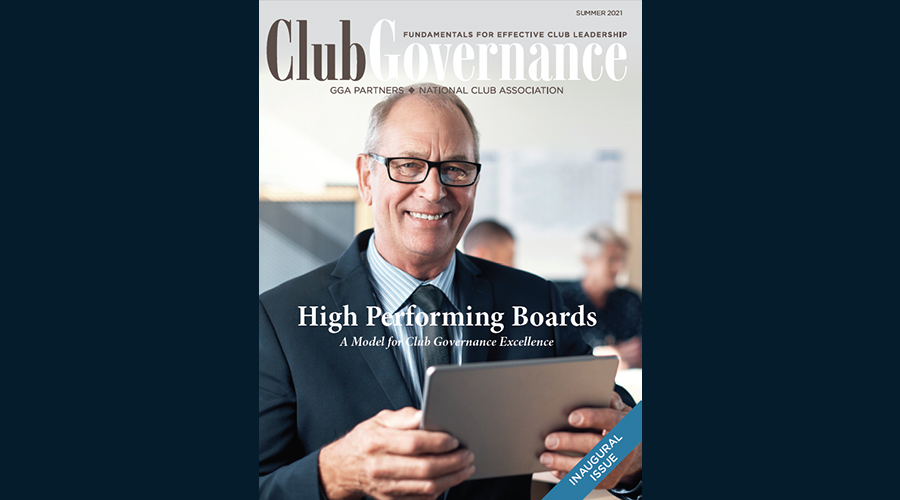“Forecasting is very difficult,
especially with regard to the future.”
Yogi Berra?
Preparing for the Future
Even if the late Yogi Berra didn’t utter this statement, it’s an easy attribution. Like so many of Yogi’s statements, it tucks a truth inside a pithy, if nonsensical saying. We can speculate on the future, guess at trends, or engage a soothsayer, but we can never be certain of our forecast.
Yet as club leaders we are called upon to plan, invest, and adapt. Despite our inability to predict the future, we know the risks of sticking to the status quo. So how do we prepare for the new law, the gathering trend, the abrupt change in the economy, or other externalities – especially those that are unforeseen?
There are two issues relating to a club’s preparations for the future: recognizing the need to change, and taking the appropriate action
A club is best prepared to recognize the need to change by developing a well-constructed strategic plan and maintaining it as a dynamic document (i.e. revising it as new information becomes available). The more considered and current the strategic plan, the better prepared the club will be to respond to evolving conditions.
Next, in order to take the appropriate action, the club needs a Board that is three things: thoughtful, decisive, and nimble.
Thoughtfulness and decisiveness are features of the Board’s character and competence, and are best achieved by sound election processes to recruit Board members based on their merits (i.e. their ability to serve professionally in a culture of cooperation and respect).
Nimbleness, on the other hand, has to do with the flexibility afforded the Board via the club’s governing documents – its bylaws and Board policies. The Board’s agility is based less on the quality of its members than on its documented processes.
When the Future Arrives
Good doctors do two things well: make accurate diagnoses, and prescribe effective treatments. Similarly, effective club Boards do two things well: assess the impact of new laws, growing trends or shifting styles, and then take the action appropriate to address the impact.
So, what can a Board do in the present that will equip it to respond to the future when it arrives?
For years we at Global Golf Advisors have strongly recommended that club Boards develop and maintain a Board Policies Manual (BPM), which contains all of the Board’s standing policies in a succinct, well-organized document. We also recommend that bylaws be amended to afford flexibility for the Board to carry out its fiduciary responsibilities in a professional, transparent manner. The two actions must go hand in hand.
A club’s bylaws are actually “member policies” – instructions from the members to the Board. Members will be reluctant to cede authority to the Board without knowing how that authority will be used, and that’s where the BPM comes in. If the bylaws instruct the Board to maintain a publicly available BPM that clearly lays out how it will govern, then the members can be well informed as to how their Board is serving them.
Our advice is simple: include in the bylaws only the basic requirements, and let the Board formulate and publish in a BPM those policies it believes will allow it to govern effectively. Why? Because when the future arrives – say, a new law is passed, a new trend is affecting the club, or new amenities are being demanded by the members – a Board needs the flexibility of responding without having to go back to the members for a vote.
Of course, there are limits to ceding authority from the bylaws to the BPM. We are not advocating a carte blanche transfer. But in our experience, most club bylaws can be streamlined so they contain only the basics, thereby leaving plenty of room within which the Board can operate. The BPM is the centerpiece to the Club Governance Model*, which is the standard for excellence among the club community. There are many reasons for a club Board to develop and maintain a BPM. Preparing for the arrival of the future is just one of them.
For further advice on creating and maintaining a Board Policy Manual (BPM) for your Club, connect with GGA Director, Fred Laughlin.
*GGA’s Guide to Implementing the Club Governance Model is available to club leaders and Board members on request.




